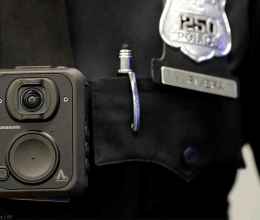Hamdan v. Department of Justice is a Freedom of Information Act lawsuit seeking information about the United States’ role in the detention and torture of Naji Hamdan, a US citizen, in the United Arab Emirates. After years of surveillance by US intelligence officials, Mr. Hamdan was detained and tortured in a secret prison in the UAE. Shortly after the ACLU/SC filed a habeas case alleging the US government’s complicity in his abduction, he was released from the secret prison. The ACLU/SC later filed a FOIA request seeking documents that would establish the US government’s role in Mr. Hamdan’s abduction. When several government agencies provided inadequate responses to the request, and several others refused to respond at all, the ACLU/SC filed suit.
Case Developments
The government filed a reply brief in support of the State Department's motion for summary judgement. Read the reply.
The ACLU filed an opposition to the State Department's motion for summary judgement. Read the filing.
The government filed a motion for summary judgement on behalf of the State Department. Read the motion.
The ACLU filed a reply brief contesting the government’s assertion that illegal “methods” can be withheld and its extraordinarily narrow view of FOIA. Read the brief.
The government filed a reply brief in which it claimed that it can withhold information on the ground that it would reveal the government’s use of illegal intelligence “methods” (even use of torture), stating that “the legality of agency activity is irrelevant” to determining whether a withholding is proper. Read the brief.
The ACLU filed a cross-motion for summary judgement and opposition against the CIA, FBI, DIA, TSA, NSA, ODNI, NSD, and OI&A. Read the motion.
The government filed a motion for summary judgement on behalf of the CIA, FBI, DIA, TSA, NSA, ODNI, NSD, and OI&A. Read the motion.
The ACLU filed a complaint against the government's insufficient responses to the Freedom of Information Act request. Read the complaint.
The ACLU filed a Freedom of Information Act request seeking documents that would establish the government's role in Mr. Hamdan's abduction.
The U.A.E. convicted Mr. Hamdan of unspecified terrorism charges. The trial was filled with gross miscarriages of justice, including that Mr. Hamdan was never allowed to see the evidence against him. After outcry by international human rights organizations and coverage by international press, the U.A.E. sentenced Mr. Hamdan to time served and ordered deported. Mr. Hamdan was given the choice to be deported to the United States or Lebanon, but chose Lebanon in light of his fear of the United States government.
The ACLU/SC filed a habeas petition on Mr. Hamdan’s behalf, alleging the United States’ complicity in his detention and torture. Roughly two weeks later, the U.A.E. released Mr. Hamdan from the black site, transferred him to a normal U.A.E. prison, and criminally charged him with terrorism-related crimes including relating to his alleged “activities on the internet.” The United States later sought to dismiss the habeas case on the ground that Mr. Hamdan had been charged criminally.
Mr. Hamdan remained in secret detention for nearly three months, during which time he was subject to daily acts of unspeakable physical and psychological torture. He was interrogated extensively, and nearly exclusively, about his activities in the United States. About a month into his detention, during a particularly brutal torture session, one of Mr. Hamdan’s interrogators spoke to him in English, with a perfect American accent. Though Mr. Hamdan was blindfolded, through the gap in his blindfold he saw that this interrogator was wearing Western style slacks and shoes, whereas the other interrogators were wearing Arab-style attire.
Six weeks after being interrogated by the FBI, Mr. Hamdan was abducted from his home in the U.A.E. by state security forces and taken to an undisclosed location. Although the U.A.E. is a close ally of the U.S. that shares information and closely cooperates with the U.S. on matters of counter-terrorism, the U.A.E. denied U.S. Embassy officials contact with Mr. Hamdan for nearly two months.


